On View
Dan Flavin Lights Up Dia Beacon With Stunning Subterranean Installation
An eerie early work shines underground.
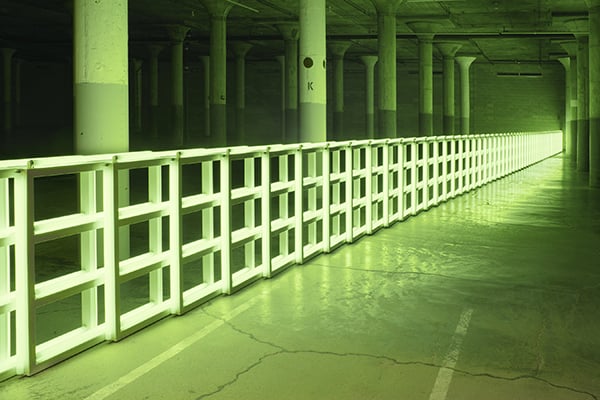
An eerie early work shines underground.

Sarah Cascone

Historic works from the Dia Art Foundation‘s collection are back in the spotlight at Dia Beacon, which unveiled new permanent installations of work by Walter De Maria, Dan Flavin, and Bruce Nauman on May 7 during its annual spring benefit.
The new installation marks the US debut of De Maria’s 360º I Ching/64 Sculptures, a large-scale work Dia commissioned in 1981. The piece fills the long corridor of Dia Beacon’s De Maria galleries with 576 white lacquer rods on a bright red carpet.
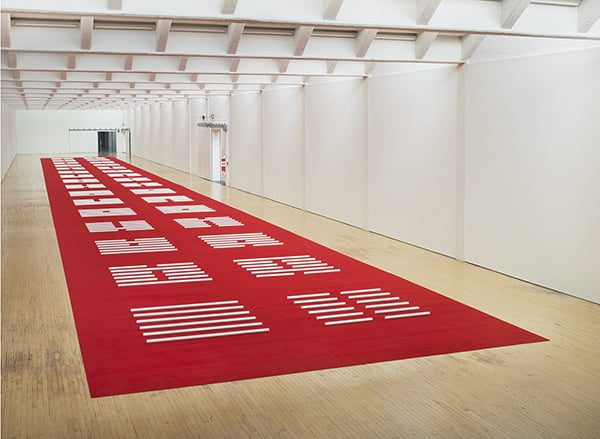
Walter De Maria, 360˚ I Ching/64 Sculptures (1981), at Dia Beacon. Courtesy of photographer Bill Jacobson Studio, New York, © the Estate of Walter De Maria.
The arrangement, which explores every possible combination of broken and unbroken lines, is inspired by the I Ching, an ancient Chinese book of philosophy and divination.
The first of Dia’s basement galleries has been given over to Flavin’s 1973 work, Untitled (to you, Heiner, with admiration and affection), an early barrier piece that forms a fluorescent green fence dividing the space, and is named after Dia Art Foundation founder Heiner Friedrich.
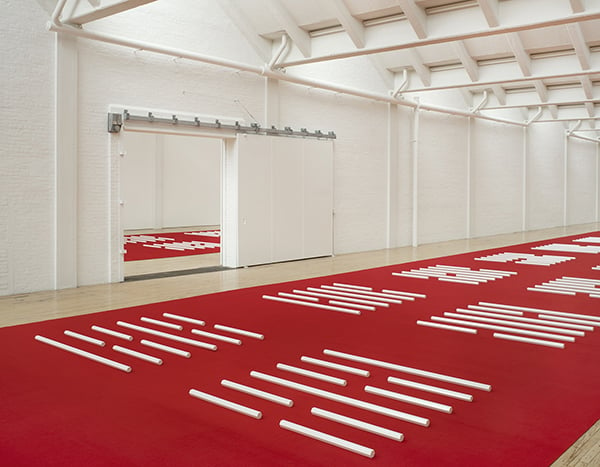
Walter De Maria, 360˚ I Ching/64 Sculptures (1981), at Dia Beacon. Courtesy of photographer Bill Jacobson Studio, New York, © the Estate of Walter De Maria.
The work debuted in 1973 at Kunsthalle Köln, but was not shown again until 2001. It appeared in “Dan Flavin: A Retrospective,” a travelling 2004–07 exhibition organized by Dia. The work was put on display at Munich’s Pinakothek der Moderne before returning to the US for the current presentation, its first at Dia Beacon.
Here, the rows of columns that break up the architectural space glow in otherworldly fashion. Overwhelmed by the green light, your eyes compensate by slowly adjusting to a narrow wedge of daylight seeping in from nearby windows.
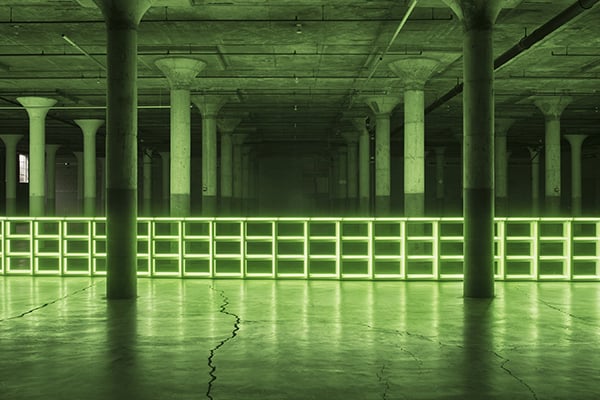
Dan Flavin, Untitled (to you, Heiner, with admiration and affection), 1973, at Dia Beacon. Courtesy of photographer Bill Jacobson Studio, New York, © Stephen Flavin/Artists Rights Society (ARS), New York.
In the adjoining Nauman gallery, the space has been reconfigured into a somewhat-claustrophobic maze to show Left or Standing, Standing or Left Standing (1971), on view for the first time in over a decade. Dia is also revisiting the 2001 work, Mapping the Studio I (Fat Chance John Cage), Nauman’s multi-screen projection of video footage of creatures running about his empty studio at night.
The works from all three artists nicely complement the other works on view, from John Chamberlain‘s “Combines” to Michael Heizer‘s imposingly dangerous North, East, South, West voids, as well as last spring’s Robert Irwin show, Excursus: Homage to the Square³, on view through 2017.
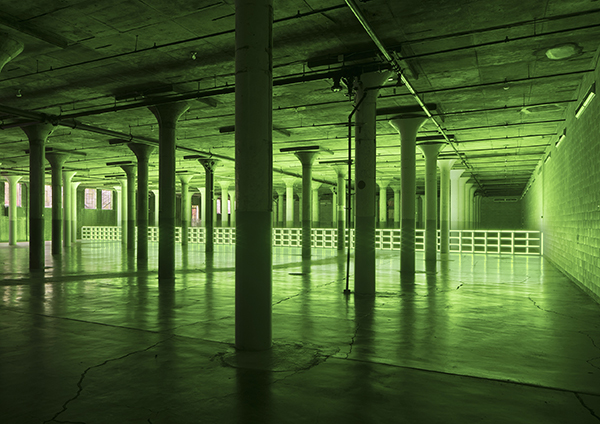
Dan Flavin, Untitled (to you, Heiner, with admiration and affection), 1973, at Dia Beacon. Courtesy of photographer Bill Jacobson Studio, New York, © Stephen Flavin/Artists Rights Society (ARS), New York.